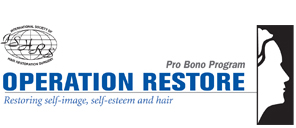Exosome Therapy
What are Exosomes?
We all possess Exosomes within our body. Exosomes are found in all biological fluids and are secreted by all cells. They are tiny vesicles (akin to nature’s envelopes derived from contents of our cells) that can help deliver signals from cell to cell within our body. Think of them as the most secure envelope, like specialized “certified mail” delivery, that most effectively carry messages by actually fusing with the target cell to deliver their contents, or their signal, fully intact. Importantly, Exosomes can ensure the best delivery of specialized signals that promote cell survival – and ultimately hair growth.
How can they grow hair?
By delivering stimulatory contents directly into regions of a hair follicle that control the cell cycle, hair can not only be shifted into the growth phase, but also kept there for a native duration of time…possibly years. Regions of the hair follicle known to possess the highest amount of stem cell activity (the bulge and the bulb) have shown response to Exosomes – partly because Exosomes carry a protein (Wnt) on their surface that upregulates the signaling pathway as well as another (B-catenin) that promotes hair regeneration. Exosomes have even been shown to increase proliferation of the “engine-cells” of a follicle: dermal papilla cells, hair matrix cells, and outer root sheath cells.
But wait! I’ve heard this tune before in the form of platelet-rich plasma (PRP) therapy for hair. Don’t platelets also release important signals called growth factors? How is Exosome therapy different and better than PRP for hair?
Why would this be better than PRP?
The way that I like to explain it is by using the analogy of newspaper delivery. Most of us can recall the days of the rather erratic newspaper boy on a bike who would fling his papers in the general vicinity of the houses he passed on his route. Although there may the rare occasion of a tossed paper landing perfectly at the foot of a door, it was not altogether likely. Then, if it rained and the paper was uncovered, the ink of the paper would run and the news would not be legible nor effectively delivered. In this analogy, that is PRP treatment because growth factors released from platelets are “naked” within the scalp as they migrate towards nearby follicles on their mission to stimulate hair growth.
Now, using this same scenario of newspaper delivery, imagine a very meticulous delivery person who carefully wraps your paper in a protective package before walking up to your doorstep, ringing your doorbell and handing the paper directly into your hands. That would be the Exosome delivery service – where signals, in the form of proteins and nucleic acids, are protected from rapid degradation.
The news that you (and “you” would be the hair follicle in this analogy) would receive is that “It is time to grow”. Having received the intact message in mint condition, you (the hair follicle) would take action.
The theoretical benefits of Exosome therapy on hair are:
1) Improved efficacy of hair growth over PRP due to the enhanced delivery system to the hair follicle.
2) Extended duration of hair growth compared to PRP due to the lack of degradation of vesicular contents being delivered by enhanced fusion into hair dermal papilla cells and other “engine cells” of a follicle. One company (Exocelbio), suggests that Exosome therapy may last for years as the duration of the healthy anagen phase may range from 4 to 7 years.
3) Fewer side effects due to their small size (only 40-120nm). Natural synthesis of Exosomes from contents within a human cell does not trigger an immune response. So, patients report less swelling, less post-procedural soreness or itching, and even little to no temporary hair shedding after Exosome therapy.
How are Exosomes derived? Which source works best?
According to a leading manufacturer, Exosomes are naturally-produced – meaning that they come from within stem cells of one of the various connective tissues of the body. These stem cells are called mesenchymal stem cells (MSCs). Mesenchymal cells are connective tissue cells that we all possess during our earliest stages of growth. They are pluripotent – meaning they can differentiate into more mature, specialized cells in our body. Sources of MSCs include bone marrow, fat (adipose tissue), umbilical cord tissue (Wharton’s Jelly), amniotic fluid (the fluid surrounding a fetus), or the placental chorion (the fetal part of the placenta).
Umbilical and chorionic stem cells yield higher Exosome amounts than bone marrow. It has been shown that Exosomes increase cell survival in a “dose dependent” manner. So, it stands to reason that chorion and umbilical MSCs may prove more effective for hair stimulation.

















